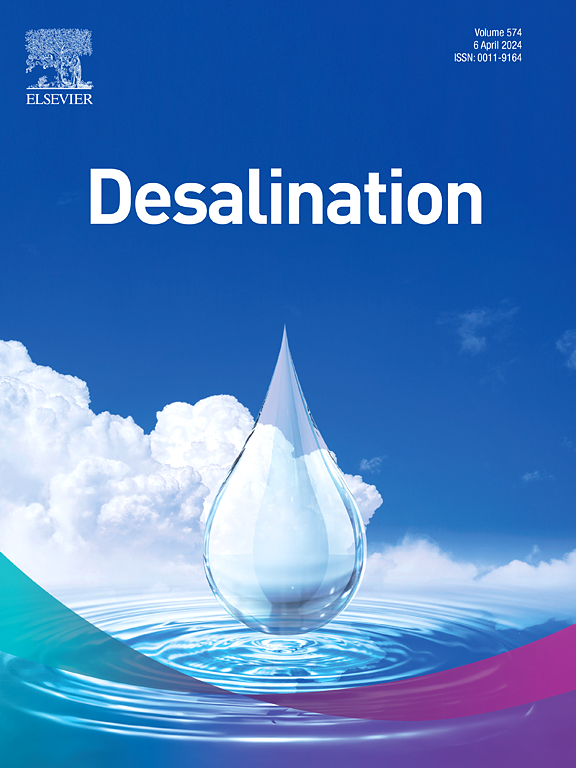基于GP-CS@CF电极的原电池辅助铀吸附
IF 8.3
1区 工程技术
Q1 ENGINEERING, CHEMICAL
引用次数: 0
摘要
铀的有效分离和回收对放射性废水的可持续管理具有重要的战略意义。针对传统吸附技术的局限性,本研究采用电化学-吸附耦合方法构建了一种新型的铀萃取系统。开发了一种新型的草甘膦功能化壳聚糖复合电极(GP-CS@CF),并将其与原电池辅助(GCA)电化学系统集成在一起,实现了高效除铀。实验结果表明GP-CS@CF具有优异的吸附能力,GCA法对铀的提取率是传统物理化学吸附法的近7倍,最大吸附量为4860 mg/g。此外,GP-CS@CF具有优异的抗干扰性能和再生能力。机理分析表明,强化脱铀是GP-CS@CF吸附、GCA电化学还原和o2氧化三种途径协同作用的结果。本研究为铀矿开采提供了一种具有成本效益和环境可持续性的策略,具有重要的实际应用潜力。本文章由计算机程序翻译,如有差异,请以英文原文为准。
Galvanic cell-assisted uranium adsorption based on GP-CS@CF electrode
The effective separation and recovery of uranium holds significant strategic importance for the sustainable management of radioactive wastewater. In view of the limitations of traditional adsorption techniques, a novel uranium extraction system was constructed in this study using a coupled electrochemical-adsorption approach. An innovative glyphosate-functionalized chitosan composite electrode (GP-CS@CF) was developed and integrated with a galvanic cell-assisted (GCA) electrochemical system to achieve high-efficiency uranium removal. Experimental results demonstrated that GP-CS@CF exhibited an excellent adsorption capacity, and the GCA method achieved a uranium extraction rate nearly seven times that of traditional physicochemical adsorption methods, with a maximum adsorption capacity of 4860 mg/g. Moreover, GP-CS@CF exhibited excellent anti-interference properties and regeneration ability. Mechanistic analysis suggested that the enhanced uranium removal was attributed to synergistic effects of three pathways: adsorption by GP-CS@CF, electrochemical reduction via the GCA, and O2-mediated oxidation. This study offers a cost-effective and environmentally sustainable strategy for uranium extraction, which has significant potential for practical application.
求助全文
通过发布文献求助,成功后即可免费获取论文全文。
去求助
来源期刊

Desalination
工程技术-工程:化工
CiteScore
14.60
自引率
20.20%
发文量
619
审稿时长
41 days
期刊介绍:
Desalination is a scholarly journal that focuses on the field of desalination materials, processes, and associated technologies. It encompasses a wide range of disciplines and aims to publish exceptional papers in this area.
The journal invites submissions that explicitly revolve around water desalting and its applications to various sources such as seawater, groundwater, and wastewater. It particularly encourages research on diverse desalination methods including thermal, membrane, sorption, and hybrid processes.
By providing a platform for innovative studies, Desalination aims to advance the understanding and development of desalination technologies, promoting sustainable solutions for water scarcity challenges.
 求助内容:
求助内容: 应助结果提醒方式:
应助结果提醒方式:


